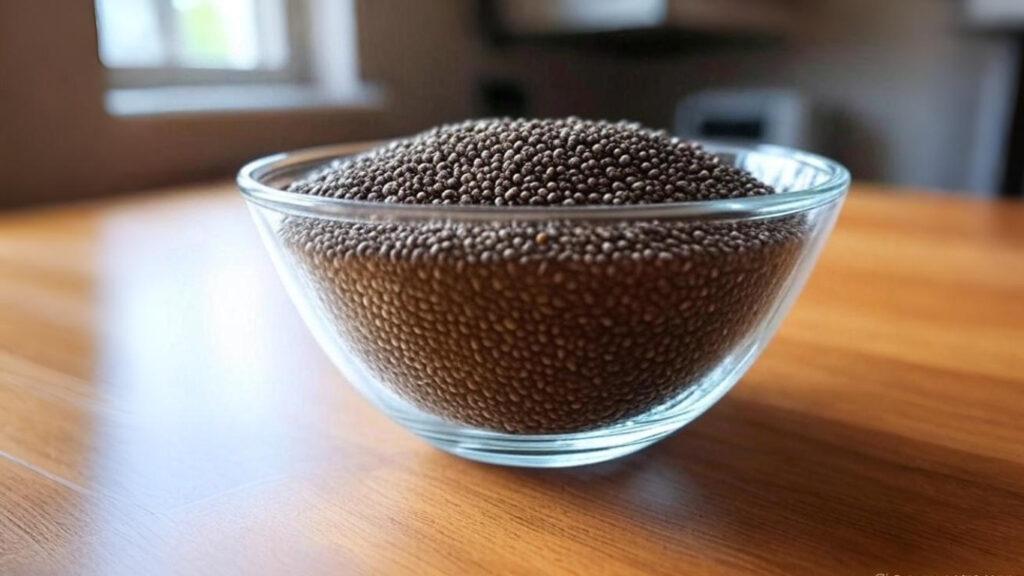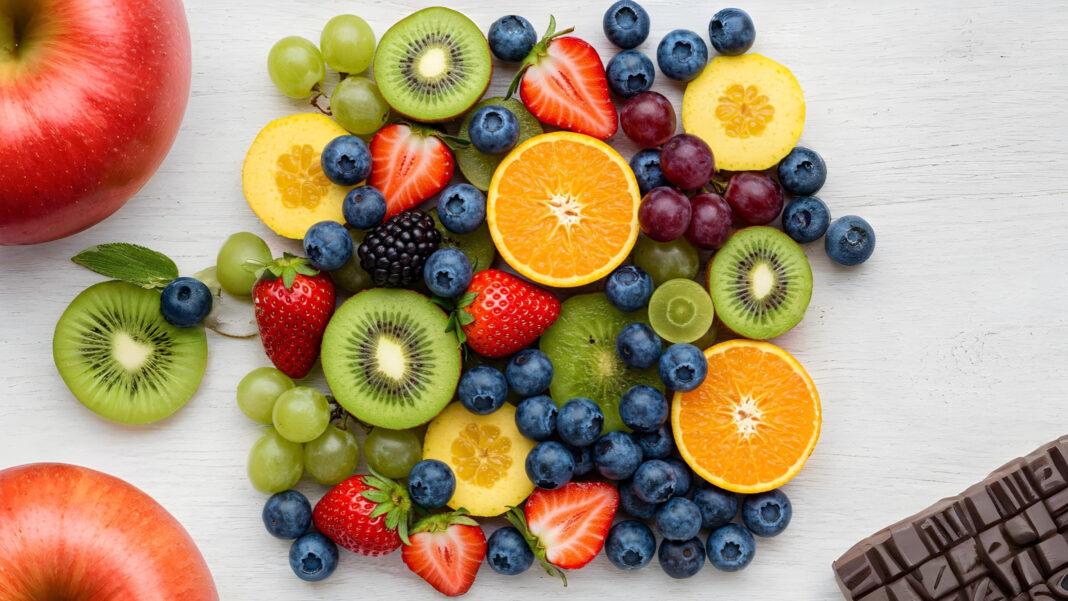Chia seeds have become popular as a superfood. They are known for their great nutrition and versatility in recipes. These small seeds come from the Salvia hispanica plant. They are full of fiber, omega-3 fatty acids, protein, and essential vitamins and minerals. To get the most benefits and avoid any issues, it’s important to know how to use them correctly. This guide will cover expert tips on eating chia seeds, their health benefits, possible cautions, and easy ways to add them to your diet.

Contents
- What Are Chia Seeds?
- Health Benefits of Chia Seeds
- How to Eat Chia Seeds the Right Way
- Cautions and Potential Side Effects
- Practical Tips for Buying and Storing Chia Seeds
- Delicious Chia Seed Recipes to Try
- Frequently Asked Questions:
- u003cstrongu003eCan I eat chia seeds without soaking them?u003c/strongu003e
- u003cstrongu003eHow many chia seeds should I eat daily?u003c/strongu003e
- u003cstrongu003eAre chia seeds safe for children?u003c/strongu003e
- u003cstrongu003eCan chia seeds help with weight loss?u003c/strongu003e
- u003cstrongu003eDo chia seeds go bad?u003c/strongu003e
- u003cstrongu003eCan I use chia seeds as an egg substitute?u003c/strongu003e
- Conclusion
What Are Chia Seeds?
Chia seeds are small, oval-shaped seeds with a black, gray, or white exterior. Native to Central America, they were a staple in ancient Mayan and Aztec diets, valued for their energy-boosting properties. The word “chia” means “strength” in the Mayan language, reflecting their historical use as a source of stamina. Today, This seeds are a global health food, prized for their nutrient density and ability to absorb liquid, creating a gel-like texture.
Nutritional Profile of Chia Seeds
A 1-ounce (28-gram) serving of chia seeds provides:
- Calories: 137
- Fiber: 10.6 grams (42% of the daily recommended intake)
- Protein: 4.7 grams
- Fat: 8.6 grams (including 5 grams of omega-3 fatty acids)
- Calcium: 177 mg (18% of the daily value)
- Magnesium: 95 mg (23% of the daily value)
- Phosphorus: 265 mg (27% of the daily value)
- Antioxidants: Polyphenols and other compounds that combat oxidative stress
This seeds are nutrient-rich and great for your health. However, their benefits depend on how you prepare and eat them.
Health Benefits of Chia Seeds
According to food and nutrition experts, chia seeds offer a range of health benefits when incorporated into a balanced diet. Here’s a detailed look at their advantages:
Promotes Digestive Health
This seeds are high in fiber, which aids digestion. Soluble fiber creates a gel in the gut. This helps promote regular bowel movements and feeds good gut bacteria. Insoluble fiber adds bulk to stool, which helps prevent constipation. A 2015 study in the (Journal of Food Science and Technology) found that chia seeds’ fiber helps gut motility and eases digestive discomfort.
Supports Heart Health
This seeds are high in alpha-linolenic acid (ALA). This omega-3 fatty acid helps lower inflammation and supports heart health. A 2025 review in Nutrients said that ALA might lower heart disease risk. It does this by reducing cholesterol and blood pressure. Additionally, the fiber in chia seeds can help lower LDL (“bad”) cholesterol.
Aids Weight Management
The combination of fiber, protein, and healthy fats in chia seeds promotes satiety, helping you feel full longer. When mixed with liquid, chia seeds expand, which can curb appetite. A 2017 study in Nutrition Research and Practice found that people who ate chia seeds in a meal felt fuller. They also ate fewer calories later in the day.
Boosts Bone Health
This seeds are an excellent plant-based source of calcium, magnesium, and phosphorus, all critical for strong bones. One ounce of chia seeds has more calcium than many dairy-free foods. This makes them a fantastic choice for vegans and those who can’t have lactose.
Stabilizes Blood Sugar Levels
The fiber and gel-forming properties of chia seed slow digestion, preventing rapid blood sugar spikes. A 2019 study in Diabetes Care showed that eating chia seeds helped insulin sensitivity in people with type 2 diabetes. This makes chia seeds a great choice for a diabetic-friendly diet.
Rich in Antioxidants
Chia seed have polyphenols. These antioxidants fight free radicals and lower inflammation. These compounds may lower the risk of chronic diseases like cancer and Alzheimer’s, according to a 2018 study in Food Chemistry.
Versatile Protein Source
With nearly 5 grams of protein per ounce, chia seed are a convenient protein source for vegetarians and vegans.
How to Eat Chia Seeds the Right Way
To reap the full benefits of chia seed, preparation and consumption methods matter. Here’s how to incorporate them into your diet effectively, according to experts:
Soak Them First
Chia seed absorb up to 10–12 times their weight in liquid, forming a gel-like consistency. Soaking them before you eat helps with digestion. It also stops them from soaking up moisture in your gut, which can cause discomfort. To soak:
- Ratio: Mix 1 tablespoon of chia seed with 3–4 tablespoons of water or liquid (e.g., almond milk, juice).
- Time: Let sit for 10–15 minutes, stirring occasionally to prevent clumping.
- Storage: Soaked chia seed can be refrigerated for up to 5 days.
Soaked chia seed works well in puddings, smoothies, or as an egg substitute in vegan baking. Just mix 1 tablespoon of chia seeds with 3 tablespoons of water to make 1 “chia egg”.
Add to Smoothies
Blend chia seed into smoothies for a nutrient boost without altering the flavor. Add 1–2 teaspoons of soaked or dry seeds to your favorite smoothie recipe. The seeds will thicken the smoothie, creating a satisfying texture.
Sprinkle on Foods
Dry chia seeds can be sprinkled on yogurt, oatmeal, salads, or avocado toast for added crunch and nutrition. However, experts recommend consuming no more than 1–2 tablespoons of dry seeds at a time to avoid digestive issues.
Incorporate into Baking
Chia seed can be added to muffins, bread, or energy bars. Use ground chia seeds for a smoother texture in baked goods. Grinding also improves nutrient absorption, as the seeds’ hard outer shell can be tough to digest whole.
Make Chia Pudding
Chia pudding is a popular, easy-to-prepare dish. Mix 3 tablespoons of chia seed with 1 cup of milk, either dairy or plant-based. Add honey or maple syrup for sweetness. Then, refrigerate for at least 4 hours or overnight. Top with fruit, nuts, or granola for a nutritious breakfast or snack.
Use as a Thickener
Chia seed gel-like texture makes them a natural thickener for soups, sauces, or jams. Add 1–2 teaspoons of soaked seeds to recipes for a nutrient-packed consistency boost.
Drink Chia Fresca
A traditional Mexican drink, chia fresca combines chia seed with water, lemon or lime juice, and a touch of sweetener. Mix 1 tablespoon of chia seeds with 1 cup of water, let sit for 10 minutes, then add citrus juice and sweetener. This hydrating drink is perfect for hot days.
Cautions and Potential Side Effects
While chia seeds are generally safe for most people, there are some precautions to consider:
Digestive Discomfort
Eating large amounts of dry chia seeds without soaking can lead to bloating, gas, or constipation, as they absorb liquid in the gut. Start with small portions (1–2 teaspoons daily) and gradually increase to 1–2 tablespoons.
Choking Hazard
Dry chia seed can swell quickly when they get wet. This can be a choking hazard, especially for kids or anyone with trouble swallowing. Always soak or mix with food before consuming.
Allergic Reactions
Some people can be allergic to chia seed, but this is rare. They may have symptoms like itching, rashes, or trouble breathing. Discontinue use and consult a doctor if you notice adverse reactions.
Interactions with Medications
Chia seeds are high in fiber, which may block the absorption of some medications. This includes drugs for diabetes and blood pressure. Consult your healthcare provider if you’re on medication.
Moderation is Key
While nutrient-dense, This seeds are calorie-dense. Overconsumption can contribute to weight gain. Stick to the recommended serving size of 1–2 tablespoons per day.
Practical Tips for Buying and Storing Chia Seeds
- Choose Quality: Opt for organic, non-GMO chia seed from reputable brands to ensure purity.
- Check Color: Black and white chia seed is similar in nutrition. Choose based on what you like or how they look in your recipe.
- Storage: Store chia seed in an airtight container in a cool, dry place for up to 2 years. Refrigeration extends shelf life.
- Grinding: Use a coffee grinder or blender to grind chia seed. This helps with nutrient absorption. Just grind what you need to keep them fresh.
Delicious Chia Seed Recipes to Try
Vanilla Chia Pudding
- Ingredients: 3 tbsp chia seeds, 1 cup almond milk, 1 tsp vanilla extract, 1 tbsp maple syrup, fresh berries.
- Instructions: Mix all ingredients except berries in a bowl. Refrigerate for 4 hours or overnight. Top with berries before serving.
Read Also: How to start Cloud Kitchen at Home: Skyrocket Your Food Business in 2025
Chia Seed Energy Bars
- Ingredients: 1 cup rolled oats, 2 tbsp chia seeds, 1/4 cup almond butter, 1/4 cup honey, 1/4 cup dark chocolate chips.
- Instructions: Mix ingredients, press into a parchment-lined pan, and refrigerate for 2 hours. Cut into bars.
Chia-Infused Green Smoothie
- Ingredients: 1 cup spinach, 1 banana, 1 tbsp chia seeds, 1 cup coconut water, 1/2 avocado.
- Instructions: Blend all ingredients until smooth. Serve immediately.
Frequently Asked Questions:
u003cstrongu003eCan I eat chia seeds without soaking them?u003c/strongu003e
Yes, but soaking is recommended to improve digestibility and prevent digestive discomfort. Dry chia seeds can be sprinkled on foods in small amounts (1–2 teaspoons).
u003cstrongu003eHow many chia seeds should I eat daily?u003c/strongu003e
A safe and effective serving size is 1–2 tablespoons per day. Start with smaller amounts if you’re new to chia seeds.
u003cstrongu003eAre chia seeds safe for children?u003c/strongu003e
Yes, but soak them first to avoid choking hazards. Start with 1 teaspoon for young children and consult a pediatrician.
u003cstrongu003eCan chia seeds help with weight loss?u003c/strongu003e
Chia seeds may support weight loss by promoting fullness due to their fiber and protein content, but they’re not a magic solution. Combine with a balanced diet and exercise.
u003cstrongu003eDo chia seeds go bad?u003c/strongu003e
Chia seeds have a long shelf life (up to 2 years) when stored properly in a cool, dry place. Check for rancid smells or mold before consuming.
u003cstrongu003eCan I use chia seeds as an egg substitute?u003c/strongu003e
Yes, mix 1 tablespoon of chia seeds with 3 tablespoons of water and let sit for 10 minutes to create a gel that works as a vegan egg substitute in baking.
Conclusion
Chia seeds are a versatile superfood packed with nutrients. You can enhance your diet by soaking them, adding them to recipes, and eating them in moderation. This unlocks their benefits for digestion, heart health, weight management, and more. But, watch for possible side effects. Consult a healthcare professional if you have health issues. With these tips and recipes, you can enjoy chia seeds the right way and boost your nutrition.



